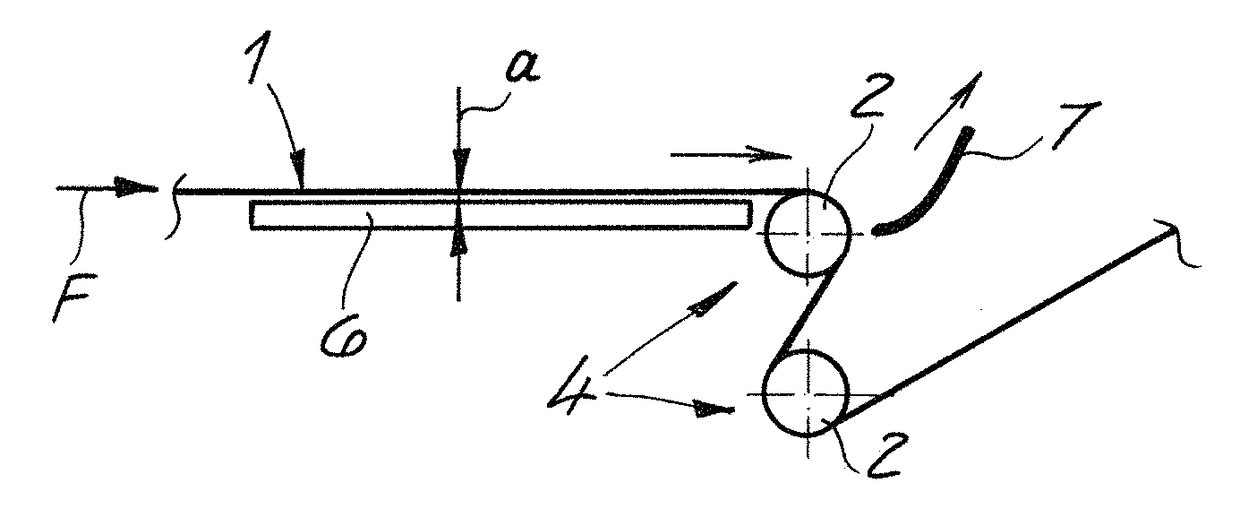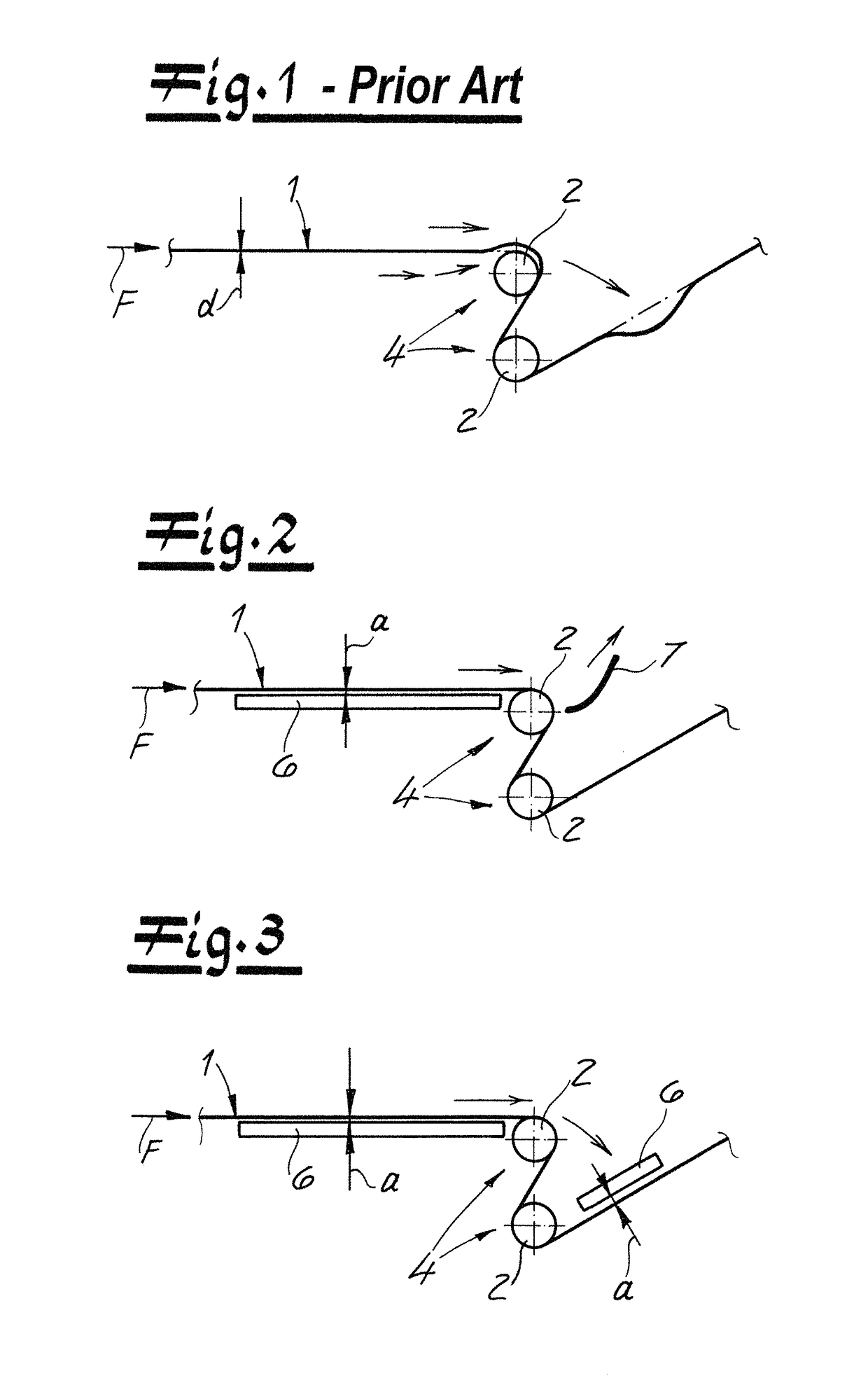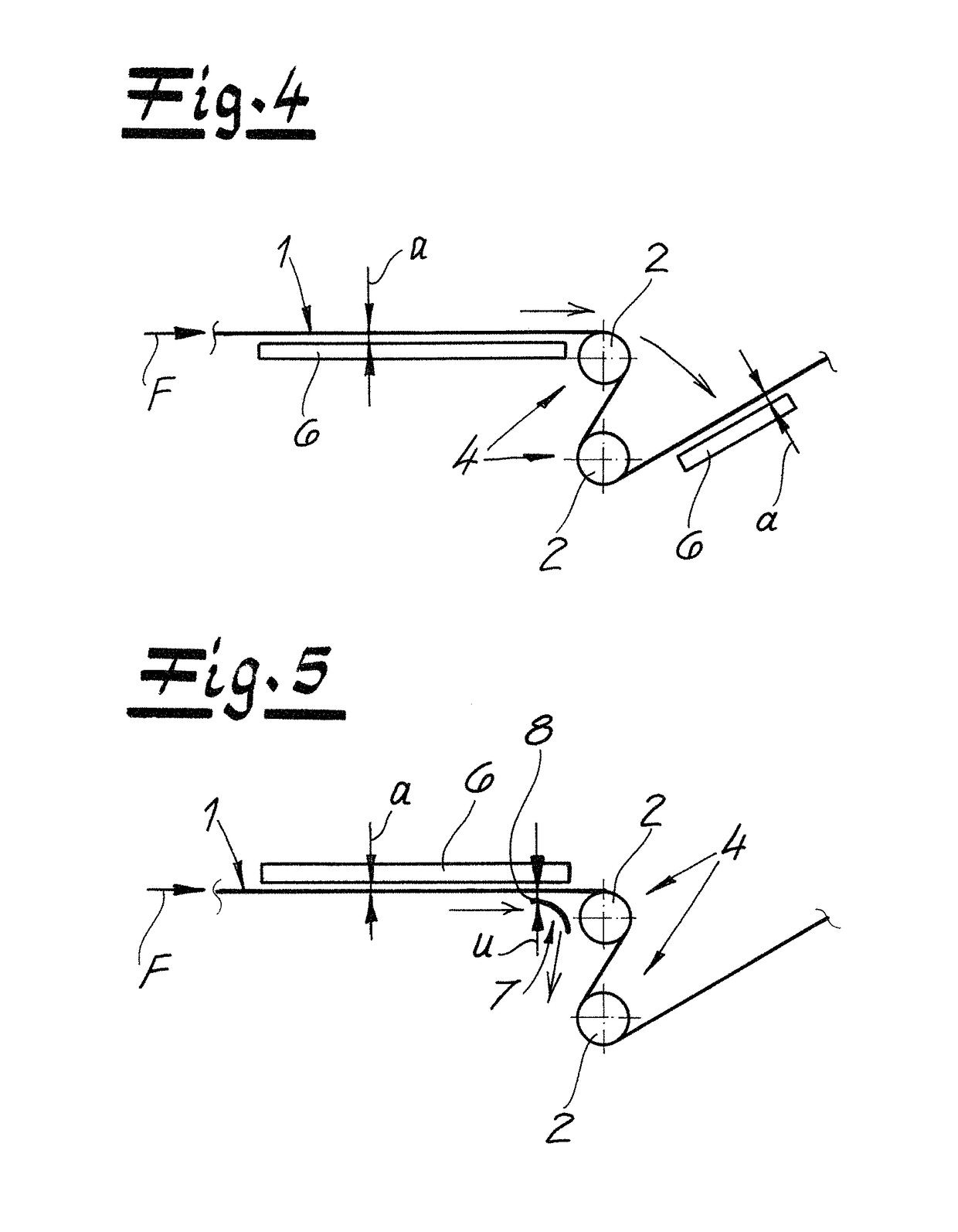Method and apparatus for guiding a nonwoven web
a nonwoven web and guide device technology, applied in the field of nonwoven web handling, can solve the problems of poor operation performance, tearing or undesired wrinkles in the nonwoven web, and the adverse effect of operation performance, so as to reduce the disturbing influence of air currents, reduce the thickness, and reduce the effect of grammag
- Summary
- Abstract
- Description
- Claims
- Application Information
AI Technical Summary
Benefits of technology
Problems solved by technology
Method used
Image
Examples
Embodiment Construction
[0046]As seen in FIG. 1 a prior-art nonwoven-web guide assembly according to the invention carries out a method according to the invention of guiding a nonwoven web 1 made of plastic fibers conveyed in a travel direction F. The plastic fibers—preferably and in the embodiment—are continuous plastic filaments advantageously composed of a thermoplastic. Such a web is typically made by depositing the filaments forming the web on an upper reach of a horizontally extending foraminous web through which air is drawn downward. The deposited filaments are compressed into the coherent web 1.
[0047]In the embodiment according to the drawings, the nonwoven web 1 may be a spunbond nonwoven web. In particular, it is within the scope of the invention to use a nonwoven web laminate as the nonwoven web, where the laminate preferably comprises at least one spunbond nonwoven web and one melt-blown nonwoven web; particularly preferably is a laminate having a layering sequence of spunbond nonwoven web / mel...
PUM
| Property | Measurement | Unit |
|---|---|---|
| thickness | aaaaa | aaaaa |
| travel speed | aaaaa | aaaaa |
| length | aaaaa | aaaaa |
Abstract
Description
Claims
Application Information
 Login to View More
Login to View More - R&D
- Intellectual Property
- Life Sciences
- Materials
- Tech Scout
- Unparalleled Data Quality
- Higher Quality Content
- 60% Fewer Hallucinations
Browse by: Latest US Patents, China's latest patents, Technical Efficacy Thesaurus, Application Domain, Technology Topic, Popular Technical Reports.
© 2025 PatSnap. All rights reserved.Legal|Privacy policy|Modern Slavery Act Transparency Statement|Sitemap|About US| Contact US: help@patsnap.com



